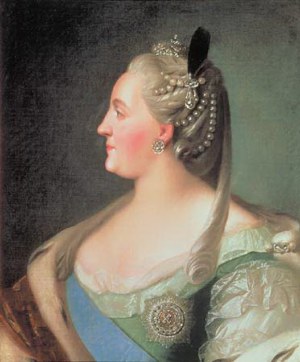
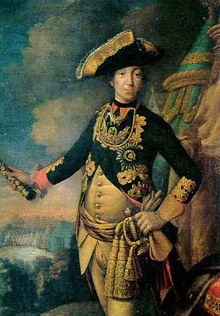

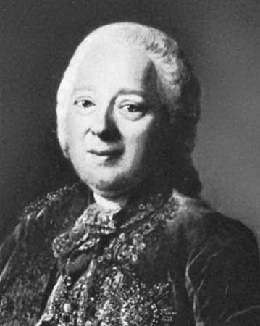
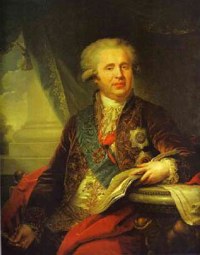
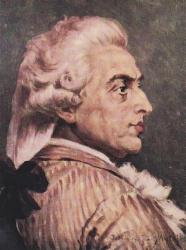
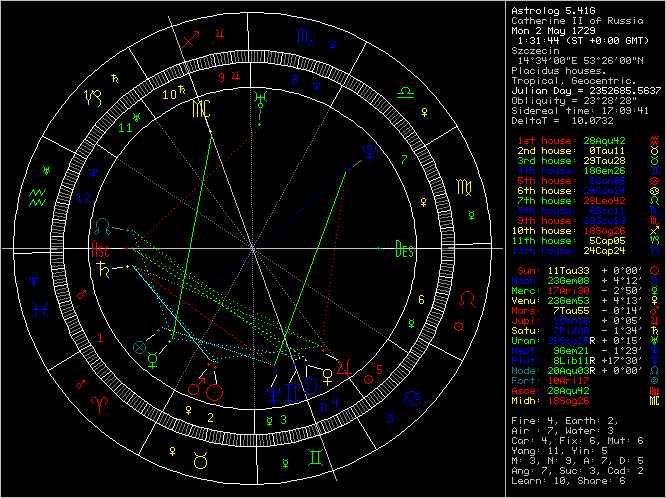
Planet
|
Longitude
|
Latitude
|
Declin.
|
Const.
|
CC22
|
0Sa15 r
|
10n28
|
9s59
|
Sco
|
OP32
|
0Pi19
|
14n25
|
2n08
|
Peg
|
96PW
|
0Vi40 r
|
5n39
|
16n32
|
Leo
|
BU48
|
1Cp52 r
|
9n07
|
14s21
|
Sct
|
HB57
|
1Ge55
|
11s36
|
9n12
|
Tau
|
RM43
|
2Sa46 r
|
9n51
|
11s04
|
Oph
|
GQ21
|
2Ta58
|
5s10
|
7n39
|
Cet
|
VR130
|
2Sa59 r
|
3n17
|
17s34
|
Sco
|
TY364
|
3Pi08
|
6s48
|
16s42
|
Aqr
|
QD112
|
3Le10
|
11n27
|
30n36
|
Cnc
|
FZ173
|
3Ta11
|
7n12
|
19n21
|
Ari
|
Jupiter
|
3Ca16
|
0n05
|
23n32
|
Gem
|
YQ179
|
3Pi52
|
15s38
|
24s35
|
Aqr
|
WL7
|
3Ar57
|
0n08
|
1n42
|
Psc
|
XX143
|
4Li36 r
|
7n04
|
4n39
|
Vir
|
CZ118
|
4Ge41
|
27n25
|
47n54
|
Per
|
TD10
|
4Li47 r
|
0n23
|
1s33
|
Vir
|
KF77
|
4Li48 r
|
0n23
|
1s33
|
Vir
|
VU2
|
4Sc51 r
|
10s16
|
22s47
|
Hya
|
QB1
|
5Ta09
|
1n20
|
14n31
|
Ari
|
VS2
|
5Ar22
|
13n13
|
14n14
|
Peg
|
Cyllarus
|
5Ta27
|
2s50
|
10n42
|
Ari
|
Pelion
|
5Aq37
|
0n19
|
18s35
|
Cap
|
KX14
|
6Li45 r
|
0s24
|
3s03
|
Vir
|
CE10
|
6Sa50 r
|
38s21
|
58s54
|
Nor
|
Ixion
|
7Sc02 r
|
10n24
|
4s02
|
Vir
|
Saturn
|
7Pi08
|
1s34
|
10s21
|
Aqr
|
RZ215
|
7Vi14 r
|
0n08
|
9n00
|
Leo
|
SB60
|
7Pi41
|
20n50
|
10n39
|
Peg
|
CO1
|
7Sa42 r
|
3n41
|
17s59
|
Oph
|
FP185
|
7Ta45
|
21s43
|
6s28
|
Eri
|
Mars
|
7Ta55
|
0s14
|
13n57
|
Ari
|
QB243
|
8Ca06
|
4n55
|
28n08
|
Gem
|
Pluto
|
8Li11 r
|
17n30
|
12n49
|
Vir
|
RP120
|
8Sc30 r
|
5n53
|
8s47
|
Lib
|
GB32
|
8Ge52
|
13s44
|
8n14
|
Ori
|
Okyrhoe
|
8Sa53 r
|
16n44
|
5s16
|
Oph
|
Asbolus
|
9Ca17
|
17n07
|
40n13
|
Aur
|
Neptune
|
9Ge21
|
1s29
|
20n25
|
Tau
|
Sedna
|
9Pi37
|
3s52
|
11s33
|
Aqr
|
CF119
|
9Pi37
|
12n48
|
3n54
|
Peg
|
GM137
|
9Sa38 r
|
8n49
|
13s12
|
Oph
|
OM67
|
9Vi46 r
|
7s09
|
1n17
|
Sex
|
QF6
|
10Sc29r
|
24n30
|
8n20
|
Ser
|
XR190
|
10Sc54r
|
26s40
|
40s09
|
Cen
|
Pholus
|
11Sc00 r
|
25n24
|
9n03
|
Ser
|
SA278
|
11Cp17r
|
14n59
|
8s04
|
Sct
|
Echeclus
|
11Sc18 r
|
3n37
|
11s48
|
Lib
|
RN43
|
11Aq27
|
15n41
|
2s16
|
Aqr
|
Sun
|
11Ta33
|
0n00
|
15n19
|
Ari
|
MW12
|
11Cp39r
|
21n29
|
1s33
|
Aql
|
Crantor
|
11Ca58
|
2s07
|
20n50
|
Gem
|
TO66
|
12Ar14
|
9n57
|
13n59
|
Psc
|
Radamantus
|
12Le15
|
10n08
|
26n51
|
Leo
|
CY118
|
12Ar27
|
14s29
|
8s25
|
Cet
|
AW197
|
12Li42 r
|
24s32
|
27s25
|
Hya
|
CR105
|
13Aq00
|
3s22
|
20s10
|
Cap
|
PN34
|
13Ca00
|
3n20
|
26n09
|
Gem
|
PA44
|
13Le21
|
3s01
|
13n56
|
Cnc
|
EL61
|
13Li51 r
|
28n00
|
20n16
|
Boo
|
Teharonhi
|
14Pi21
|
1n43
|
4s35
|
Psc
|
RG33
|
14Vi23 r
|
22n00
|
26n18
|
Leo
|
DH5
|
14Cp55r
|
18n01
|
4s44
|
Aql
|
FY9
|
16Li10 r
|
25n52
|
17n29
|
Boo
|
AZ84
|
16Ge18
|
2s06
|
20n41
|
Tau
|
Varuna
|
16Ca30
|
4n15
|
26n40
|
Gem
|
Chaos
|
16Ca48
|
10n31
|
32n50
|
Gem
|
CO104
|
16Ar59
|
1n18
|
7n52
|
Psc
|
Amycus
|
17Ge00
|
10n25
|
33n12
|
Aur
|
Nessus
|
17Ge04
|
11n49
|
34n36
|
Aur
|
MS4
|
17Sa05r
|
12n46
|
10s09
|
Ser
|
Typhon
|
17Ar16
|
1n07
|
7n49
|
Psc
|
Logos
|
17Li26 r
|
2n47
|
4s17
|
Vir
|
Mercury
|
17Ar30
|
2s50
|
4n16
|
Psc
|
WN188
|
18Ar09
|
24s21
|
15s23
|
Cet
|
Hylonome
|
18Ca09
|
3s41
|
18n35
|
Gem
|
GZ32
|
18Ta12
|
12s02
|
5n42
|
Tau
|
LE31
|
18Ca19
|
4n36
|
26n46
|
Gem
|
Midheav
|
18Sa26
|
0n00
|
22s58
|
Oph
|
Eris
|
18Sc35r
|
15s24
|
32s07
|
Cen
|
DA62
|
18Cp43r
|
53s27
|
74s03
|
Pav
|
XA255
|
18Pi48
|
11s20
|
14s50
|
Aqr
|
GV9
|
18Li52 r
|
16s56
|
22s59
|
Hya
|
Deucalion
|
19Sc14r
|
0n01
|
17s32
|
Lib
|
XZ255
|
19Pi15
|
2s31
|
6s35
|
Aqr
|
OX3
|
19Li24 r
|
2s57
|
10s20
|
Vir
|
Vertex
|
19Vi38
|
|||
RZ214
|
19Vi46 r
|
13s45
|
8s35
|
Crt
|
Node
|
20Aq01r
|
0n00
|
14s50
|
Cap
|
BL41
|
20Vi12 r
|
13s34
|
8s35
|
Crt
|
RD215
|
20Li12 r
|
3s00
|
10s41
|
Vir
|
Orcus
|
20Ca27
|
9s35
|
12n27
|
CMi
|
Chiron
|
22Ar13
|
0n43
|
9n20
|
Psc
|
TX300
|
22Ar15
|
22n26
|
29n18
|
Psc
|
Quaoar
|
22Sa33r
|
7n57
|
15s20
|
Ser
|
PB112
|
22Li36 r
|
7s49
|
16s03
|
Vir
|
OO67
|
22Li49 r
|
18n18
|
8n08
|
Vir
|
Moon
|
23Ge08
|
4n12
|
27n30
|
Tau
|
UJ438
|
23Sc17r
|
1s58
|
20s31
|
Lib
|
Bienor
|
23Aq17
|
5s11
|
18s40
|
Aqr
|
PJ30
|
23Ge23
|
2n27
|
25n46
|
Tau
|
Pylenor
|
23Ta34
|
5s07
|
13n44
|
Tau
|
Venus
|
23Ge53
|
4n13
|
27n32
|
Tau
|
FZ53
|
24Pi07
|
16n41
|
12n57
|
Peg
|
TL66
|
24Sc23r
|
8n52
|
10s17
|
Lib
|
SQ73
|
24Ca24
|
16n46
|
37n44
|
Lyn
|
Thereus
|
25Le06
|
16s46
|
2s39
|
Hya
|
Uranus
|
25Sc25r
|
0n15
|
18s54
|
Lib
|
VQ94
|
25Pi31
|
58s51
|
53s14
|
Eri
|
Huya
|
25Le39 r
|
5s02
|
8n15
|
Leo
|
RR43
|
25Ta51
|
13s02
|
6n34
|
Tau
|
Ceto
|
26Aq37
|
8n43
|
4s27
|
Aqr
|
UX25
|
26Ar49
|
1s57
|
8n32
|
Psc
|
Chariklo
|
27Ar36
|
22n12
|
31n09
|
Psc
|
UR163
|
27Ge39
|
0n20
|
23n48
|
Gem
|
Elatus
|
28Aq35
|
4s35
|
16s16
|
Aqr
|
Ascend
|
28Aq42
|
0n00
|
11s57
|
Aqr
|
Apogee
|
28Ta56
|
4n57
|
24n47
|
Tau
|
RL43
|
29Sa11r
|
12n02
|
11s26
|
Ser
|
TC302
|
29Li30 r
|
6s48
|
17s39
|
Vir
|
Planet
|
Longitude
|
Chiron
|
1Ar15
|
TX300
|
1Ar17
|
Quaoar
|
1Sa36 r
|
PB112
|
1Li38 r
|
OO67
|
1Li51 r
|
Moon
|
2Ge10
|
UJ438
|
2Sc19 r
|
Bienor
|
2Aq19
|
PJ30
|
2Ge25
|
Pylenor
|
2Ta36
|
Venus
|
2Ge55
|
FZ53
|
3Pi09
|
TL66
|
3Sc26 r
|
SQ73
|
3Ca27
|
Thereus
|
4Le08
|
Uranus
|
4Sc27 r
|
VQ94
|
4Pi33
|
Huya
|
4Le41 r
|
RR43
|
4Ta53
|
Ceto
|
5Aq39
|
UX25
|
5Ar51
|
Chariklo
|
6Ar38
|
UR163
|
6Ge41
|
Elatus
|
7Aq37
|
Ascend
|
7Aq44
|
Apogee
|
7Ta59
|
RL43
|
8Sa14 r
|
TC302
|
8Li32 r
|
CC22
|
9Sc17 r
|
OP32
|
9Aq21
|
96PW
|
9Le42 r
|
BU48
|
10Sa55r
|
HB57
|
10Ta57
|
RM43
|
11Sc49 r
|
GQ21
|
12Ar00
|
VR130
|
12Sc01r
|
TY364
|
12Aq11
|
QD112
|
12Ca12
|
FZ173
|
12Ar13
|
Jupiter
|
12Ge18
|
YQ179
|
12Aq54
|
WL7
|
12Pi59
|
XX143
|
13Vi38 r
|
CZ118
|
13Ta44
|
TD10
|
13Vi50 r
|
KF77
|
13Vi50 r
|
VU2
|
13Li53 r
|
QB1
|
14Ar11
|
VS2
|
14Pi24
|
Cyllarus
|
14Ar29
|
Pelion
|
14Cp39
|
KX14
|
15Vi47 r
|
CE10
|
15Sc52r
|
Ixion
|
16Li04 r
|
Saturn
|
16Aq11
|
RZ215
|
16Le16 r
|
SB60
|
16Aq43
|
CO1
|
16Sc44r
|
FP185
|
16Ar47
|
Mars
|
16Ar57
|
QB243
|
17Ge08
|
Pluto
|
17Vi13 r
|
RP120
|
17Li32 r
|
GB32
|
17Ta54
|
Okyrhoe
|
17Sc55r
|
Asbolus
|
18Ge19
|
Neptune
|
18Ta23
|
Sedna
|
18Aq39
|
CF119
|
18Aq39
|
GM137
|
18Sc40r
|
OM67
|
18Le48 r
|
QF6
|
19Li31 r
|
XR190
|
19Li56 r
|
Pholus
|
20Li02 r
|
SA278
|
20Sa19r
|
Echeclus
|
20Li20 r
|
RN43
|
20Cp29
|
Sun
|
20Ar35
|
MW12
|
20Sa41r
|
Crantor
|
21Ge00
|
TO66
|
21Pi16
|
Radamantus
|
21Ca17
|
CY118
|
21Pi29
|
AW197
|
21Vi44 r
|
CR105
|
22Cp02
|
PN34
|
22Ge02
|
PA44
|
22Ca23
|
EL61
|
22Vi53 r
|
Teharonhi
|
23Aq23
|
RG33
|
23Le25 r
|
DH5
|
23Sa57r
|
FY9
|
25Vi13 r
|
AZ84
|
25Ta20
|
Varuna
|
25Ge32
|
Chaos
|
25Ge50
|
CO104
|
26Pi01
|
Amycus
|
26Ta02
|
Nessus
|
26Ta06
|
MS4
|
26Sc07r
|
Typhon
|
26Pi18
|
Logos
|
26Vi28 r
|
Mercury
|
26Pi32
|
WN188
|
27Pi11
|
Hylonome
|
27Ge11
|
GZ32
|
27Ar14
|
LE31
|
27Ge21
|
Midheav
|
27Sc28
|
Eris
|
27Li37 r
|
DA62
|
27Sa46r
|
XA255
|
27Aq50
|
GV9
|
27Vi55 r
|
Deucalion
|
28Li16 r
|
XZ255
|
28Aq17
|
OX3
|
28Vi27 r
|
Vertex
|
28Le40
|
RZ214
|
28Le48 r
|
Node
|
29Cp03r
|
BL41
|
29Le14 r
|
RD215
|
29Vi14 r
|
Orcus
|
29Ge30
|